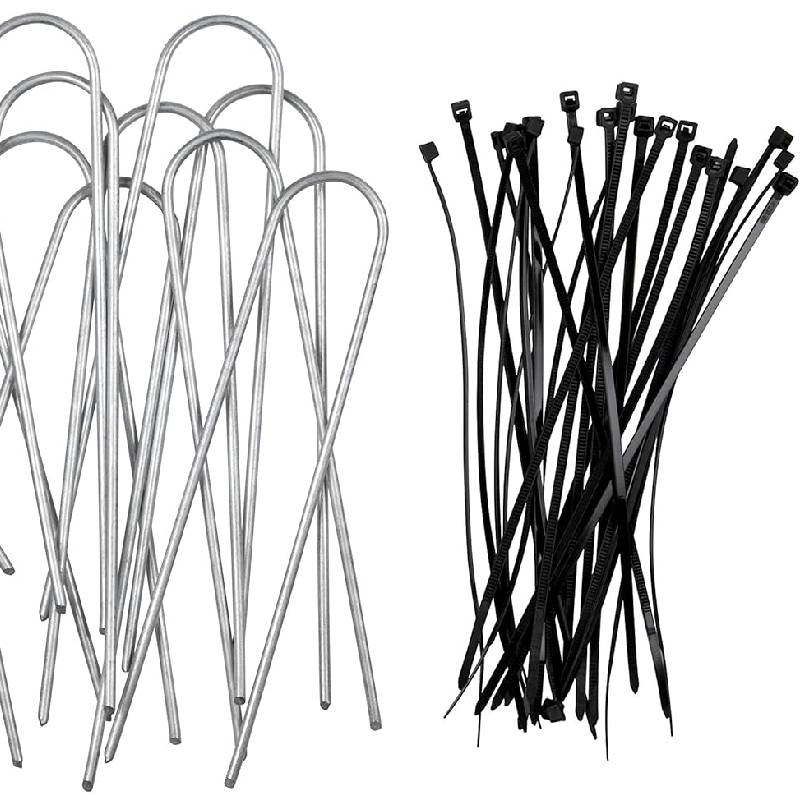
- Mobile Phone
- +8613931874955
- sales@cntcmetal.com
tomato plant stakes
The Importance of Tomato Plant Stakes A Guide for Successful Gardening
Tomato plants are a beloved staple in gardens around the world, cherished for their delicious fruits and vibrant foliage. However, to achieve a bountiful harvest, gardeners must pay close attention to how these plants are supported as they grow. One essential component of successful tomato cultivation is the use of stakes. This article delves into the significance of tomato plant stakes, their benefits, and various staking methods that can enhance your gardening experience.
Why Use Stakes for Tomato Plants?
As tomato plants grow, they can become quite large and heavy with fruit. Without proper support, they may topple over, resulting in broken stems, bruised fruits, and a greater risk of diseases due to increased contact with the ground. Stakes provide the necessary support to keep the plants upright, ensuring that they receive adequate sunlight, air circulation, and prevent rot caused by wet soil.
Staking also helps maximize space in your garden. By keeping plants off the ground, you can plant more tomatoes in a smaller area. This vertical gardening technique allows for better management of pests and diseases, which thrive on damp and crowded conditions.
Benefits of Using Stakes
1. Improved Air Circulation By elevating the plants, stakes promote better air flow around the foliage. Good air circulation helps prevent fungal diseases, which are common in humid conditions.
2. Easier Harvesting Staked plants are easier to access when it's time for harvesting. The fruits are visible and accessible, reducing the risk of missing ripe tomatoes or having to sift through leaves and vines.
3. Healthy Growth Staked plants often exhibit healthier growth. With less chance of disease and a better arrangement for sunlight exposure, tomato plants can thrive, producing higher yields.
Different Types of Tomato Stakes
tomato plant stakes

There are several methods to stake tomato plants, each with its unique advantages. Here are a few popular options
1. Single Stakes This is the most common method, where each tomato plant is attached to a sturdy pole. Wooden stakes or metal rebar can work well. As plants grow, gardeners can tie them to the stake at intervals using soft ties or twine, ensuring they remain upright.
2. Cages Tomato cages are circular and provide support all around the plant. Cages can be made from wire or metal and offer great support, especially for indeterminate varieties, which can grow quite tall. Caging helps keep the fruit off the ground and allows for good air circulation.
3. Trellises For gardeners with limited space, a trellis can work wonders. By training tomato plants to climb a trellis, you maximize vertical space while maintaining excellent sun exposure and airflow.
4. Florida Weave This method involves planting several tomato plants in a row and using twine to weave in and out of the plants at intervals. This creates a supportive structure without needing individual stakes, making it particularly effective for rows of plants.
Tips for Successful Staking
- Choose the Right Stakes Ensure the stakes are sturdy enough to hold the weight of the fully grown plant. Stakes should be at least 5-6 feet tall.
- Stake Early To avoid damaging roots, stake your tomato plants when they are young. This way, they can grow up and around the stake as they mature.
- Use Soft Ties Avoid using materials that could cut into the stems. Soft fabric ties or garden twine are excellent options that will support without causing harm.
- Monitor Regularly Check your stakes and ties regularly, ensuring that your plants remain supported as they grow. Adjust ties as necessary to accommodate their development.
In conclusion, using stakes for tomato plants is crucial for promoting healthy growth, maximizing space, and simplifying harvesting. Whether you opt for traditional stakes, cages, or trellises, providing proper support is a vital part of tomato gardening that will lead to a successful and fruitful harvest. Gardening is not just about planting seeds; it’s about nurturing those seeds to fruition, and proper staking is an invaluable practice that every enthusiastic gardener should embrace. Happy gardening!
share:
-
Your Source for Concrete Wall Ties and Masonry AccessoriesNewsJul.10,2025
-
Unlocking the Power of Iron Wire for Every ProjectNewsJul.10,2025
-
Explore Advanced Chain Wire and Stainless Steel Mesh FencingNewsJul.10,2025
-
Discover the Benefits of Annealed Wire ProductsNewsJul.10,2025
-
Discover China Stainless Steel Wire Mesh SolutionsNewsJul.10,2025
-
Build with Confidence Using High-Performance Masonry AccessoriesNewsJul.10,2025
-
Why Sacrificial Formwork Is Redefining Underground ConstructionNewsJun.06,2025



















